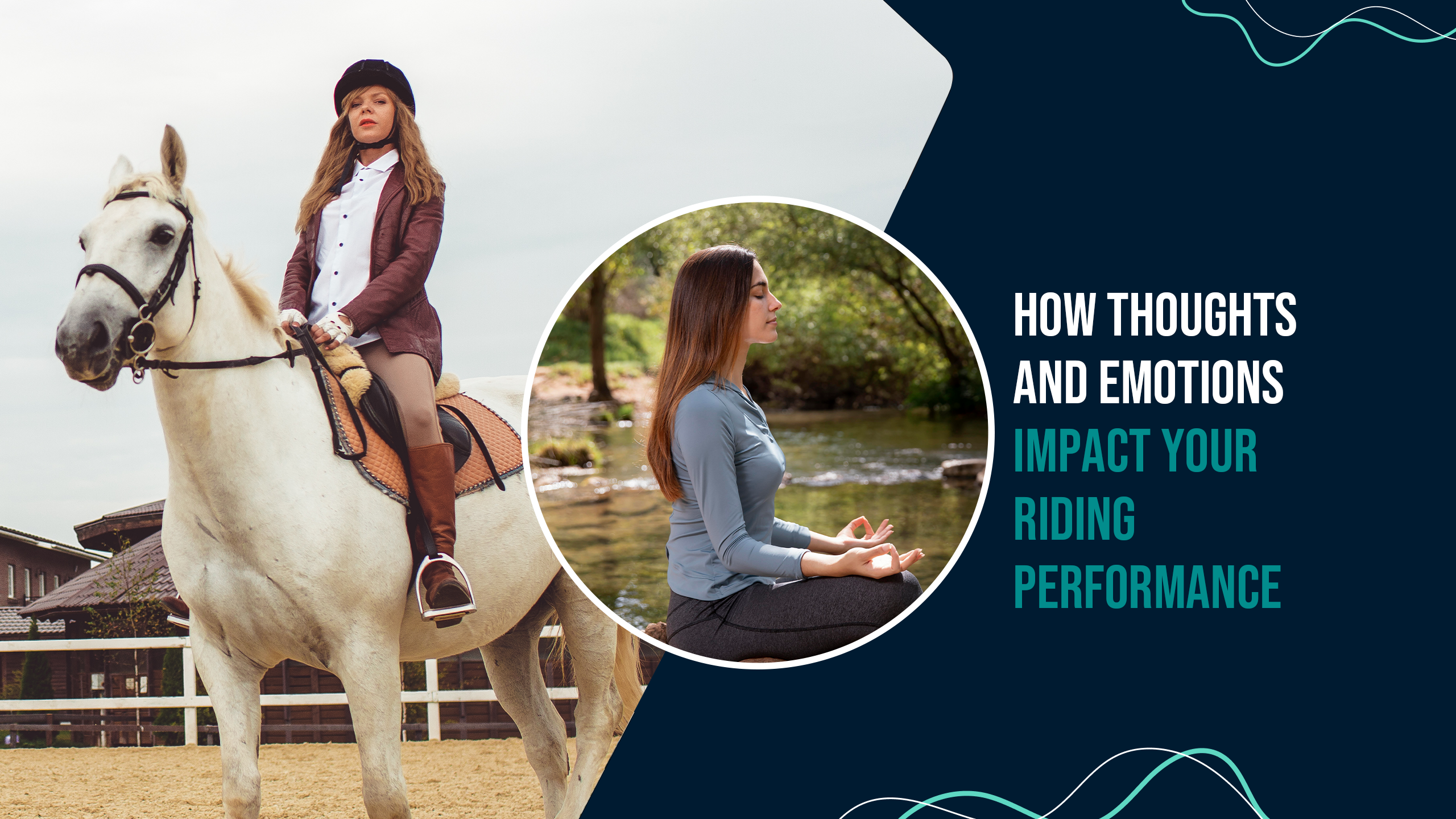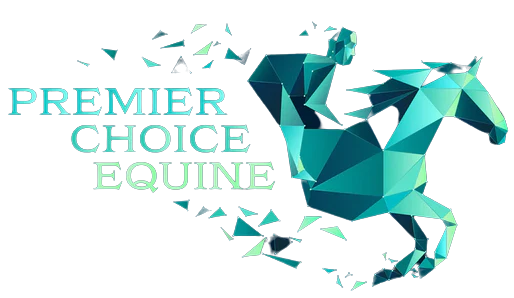
Horse riding is about more than physical activity. It’s about creating a strong connection between horse and rider, where thoughts and emotions can have a substantial influence over performance.
In this unique partnership, the mind–body connection is undeniable, with the rider's mental state playing a pivotal role. The research underscores the direct impact of thoughts and emotions on horse riding, revealing that negativity can impede effective communication with the horse.
As riders grapple with fear or anxiety, these emotions manifest physically, affecting posture, coordination, and communication cues. The blog delves into the intricate interplay between mindset and equine performance, shedding light on essential insights for every rider keen on optimizing their riding experience.
Understanding the Impact of Mindset on Equine Rider Performance
As a horse rider, your mindset will play a significant role in your performance. A positive mindset can enhance focus, confidence, and overall performance. On the other hand, a negative mindset can lead to self-doubt, fear, and a lack of trust in oneself and the horse.
One way to cultivate a positive mindset is through self-awareness. By becoming aware of your thoughts and emotions, you can identify any negative patterns and replace them with positive affirmations. Positive self-talk can help you to overcome self-doubt and build confidence. It is important that you believe in your skills and abilities and approach each riding session with a growth mindset, focusing on learning and improvement rather than the fear of failure.
Managing Fear and Anxiety in Horse Riding
Fear and anxiety are common emotions that riders experience, especially when faced with new challenges or after a fall or injury. However, allowing fear and anxiety to control one's riding can hinder progress and limit your potential. Managing fear and anxiety is crucial for every equine rider.
One effective technique for managing fear and anxiety is gradual exposure.
You can start by facing your fears in a controlled environment, such as with a trusted instructor or on a familiar horse. By gradually increasing the level of challenge, you can build your confidence and overcome your fears.
Breathing exercises and relaxation techniques can also help you to manage anxiety and stay calm during challenging situations. It is important that you remember that fear is a natural response, but it shouldn’t dictate your actions or limit your potential.
Developing a Positive Mindset for Optimal Performance
A positive mindset is essential for optimal performance in horse riding. Developing a positive mindset requires consistent practice and a commitment to self-improvement. Here are some techniques to cultivate a positive mindset as an equine rider:
- Gratitude: Expressing gratitude for the opportunity to ride and for the partnership with the horse can shift the focus from negativity to positivity. Taking time to appreciate the small wins and progress can boost confidence and overall mindset.
- Visualization: Visualizing successful rides and positive outcomes can help riders build confidence and reduce anxiety. By mentally rehearsing each movement and envisioning success, you can program your mind for optimal performance.
- Affirmations: Using positive affirmations can help riders overcome self-doubt and build confidence. Repeat affirmations such as "I am a skilled and confident rider" or "I trust myself and my horse" to reinforce positive beliefs and mindset.
Techniques for Improving Focus and Concentration while Riding
Focus and concentration are crucial for effective communication and performance in horse riding. Distractions and wandering thoughts can hinder your ability to give clear cues and respond to the horse's movements. Here are some techniques to improve focus and concentration:
- Mindfulness: Practicing mindfulness can help you stay present in the moment and maintain focus. By bringing attention to the sensations of riding, such as the movement of the horse and the feeling of the reins, you can enhance your awareness and concentration.
- Breathing exercises: Deep breathing exercises can help you relax and center your focus. By taking slow, deep breaths, you can release tension and bring your attention back to the present moment.
- Riding exercises: Incorporating specific riding exercises that require focus and concentration can improve overall attention skills. Exercises such as riding patterns, transitions, and obstacle courses can challenge you to stay focused and engaged throughout the ride.
Creating a Balanced and Harmonious Partnership with your Horse
Creating a balanced and harmonious partnership with one's horse is a goal for every equine rider. A strong partnership is built on trust, clear communication, and mutual respect. Here are some strategies for creating a balanced and harmonious partnership with your horse:
- Communication: Effective communication is essential for a successful partnership. You should learn to communicate with your horse through subtle cues, body language, and clear aids. Developing a deep understanding of the horse's behavior and language can enhance communication and strengthen the partnership.
- Trust: Trust is the foundation of any partnership. Building trust with the horse requires consistency, patience, and understanding. You should strive to be reliable and fair in your interactions with the horse, gradually earning their trust.
- Connection: Developing a strong connection with the horse goes beyond physical riding. Spending quality time with the horse, grooming, and bonding activities can strengthen the emotional bond with your horse and create a deeper connection. The more connected a rider is with their horse, the better the partnership will be.
Mindfulness Practices for Equine Riders
Mindfulness is a practice that can greatly benefit equine riders. Mindfulness involves paying attention to the present moment without judgment. By incorporating mindfulness into riding, you can enhance your awareness, focus, and overall riding experience. Here are some mindfulness practices for horse riders:
- Breathing exercises: Before getting on the horse, take a few minutes to focus on deep breathing. Inhale deeply through the nose, filling the belly with air, and exhale slowly through the mouth. This can help calm the mind and bring attention to the present moment.
- Body scan: While riding, take a moment to scan the body from head to toe, noticing any areas of tension or discomfort. By bringing awareness to the body, you can release tension and improve your posture and balance.
- Sensory awareness: Pay attention to the sensations of riding, such as the feel of the reins in the hands, the movement of the horse beneath you, and the sounds of nature. By fully immersing oneself in the sensory experience of riding, you can enhance your mindfulness and deepen the connection with your horse.
Conclusion
Thoughts and emotions have a profound impact on an equine rider's performance. By understanding the connection between thoughts, emotions, and performance, you can unlock your full potential and achieve success in horse riding.
Cultivating a positive mindset, managing fear and anxiety, improving focus and concentration, and building emotional resilience are key to harnessing the power of thoughts and emotions for success. By developing a balanced and harmonious partnership with your horse and incorporating mindfulness practices into your riding, you can elevate your performance and truly unleash your full potential.
As an equine rider, take the time to reflect on your thoughts and emotions during your riding sessions. Consider implementing some of the techniques discussed in this blog to enhance your performance and deepen your connection with your horse.
